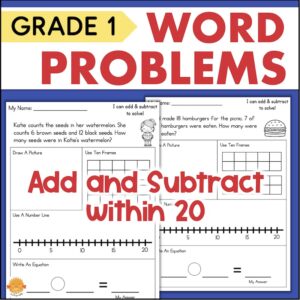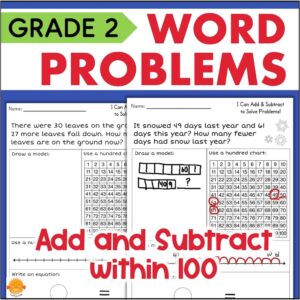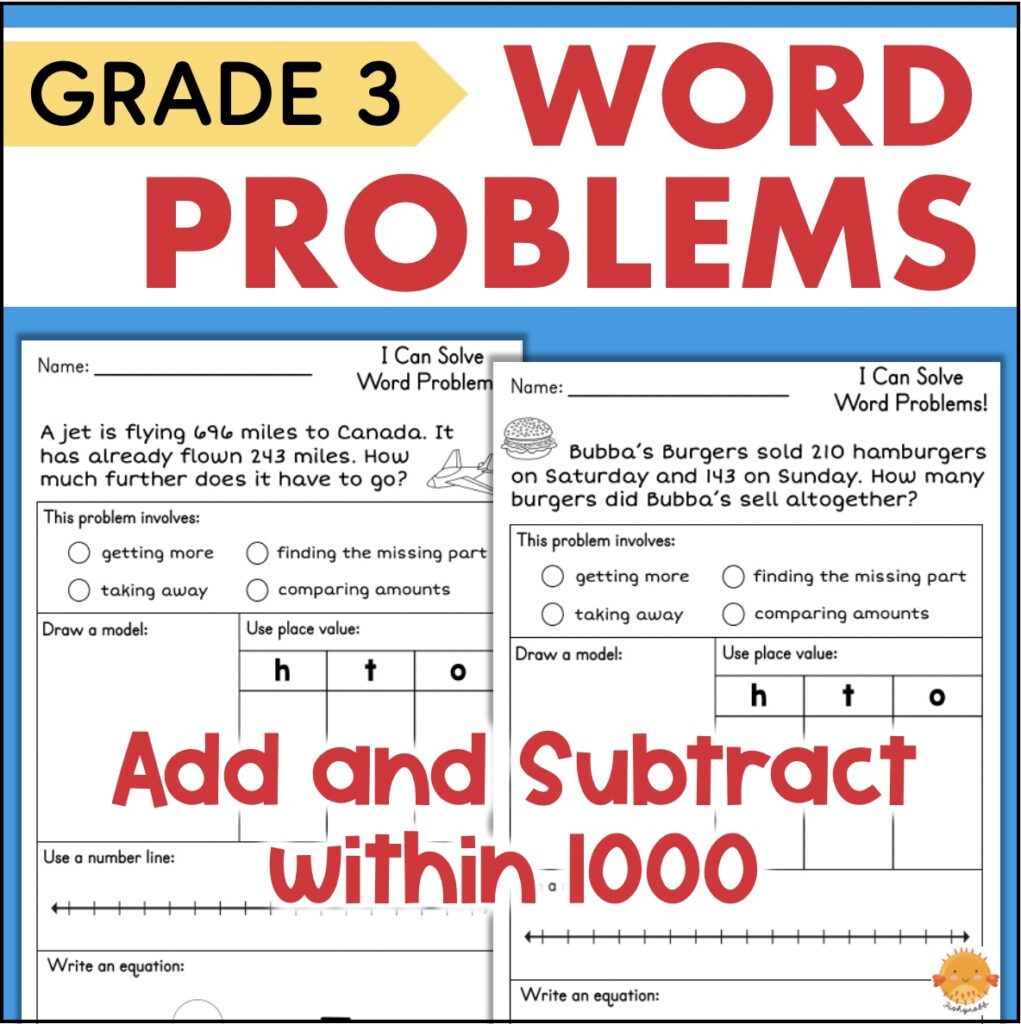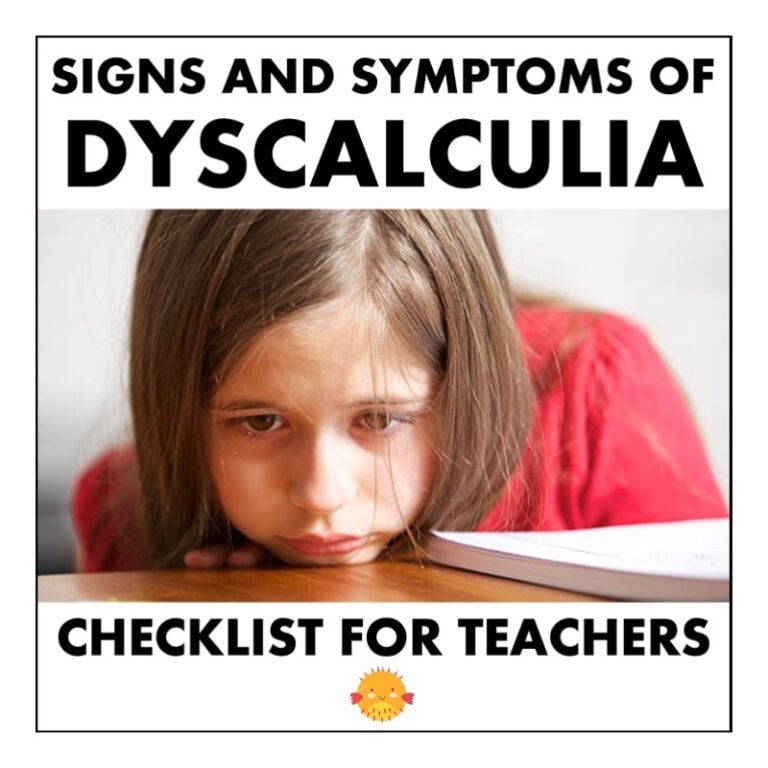
The Best Way to Teach Students How to Solve Math Word Problems
Teaching students how to solve math word problems is no easy task! How many of you have experienced the BLANK STARE when you ask your students to solve a math problem that involves reading? I’ve been there too!
No matter what grade level you teach, your math curriculum most certainly includes real world problems that require more than just completing a number sentence.
So how do you teach students how to solve math word problems?
In math, there’s no one right way to arrive at the right answer. There are many different ways to tackle a word problem – some are just more effective than others. It’s important to arm your students with a variety of different strategies so they can choose the approach that makes the most sense to them.
Here are some of the best ways to teach students how to solve math word problems and build a strong foundation.

➡️ Tackling A Word Problem
Teaching students how to solve math word problems starts with teaching them what to do step-by-step:
Read the Whole Problem
It’s really surprising how many kids skip this important first step. A lot of students only focus on the numbers. They see numbers and immediately just start doing SOMETHING with them. But you and I both know that it’s absolutely essential to read the entire word problem.
What if just telling your students to read it isn’t working? Try using some numberless word problems. This will stop them in their tracks and force them to start thinking about words in a mathematical way.
Here’s an example of a numberless problem:
Henry went to the store and bought some wood. He cut it into equal sized pieces and used some of them to build a bird house. How much of the wood does Henry have left?
This is totally unsolvable, right? But there’s a lot your students can learn from this type of problem. In my class, I would ask them:
- What other information do you need to answer the question?
- What operation(s) would you use to find the answer?
.
For 1st or 2nd grade, this is a simple subtraction problem. For 3rd grade, it might be dividing and subtracting whole numbers. For 4th grade, it might be division and subtracting fractions with like denominators.
.
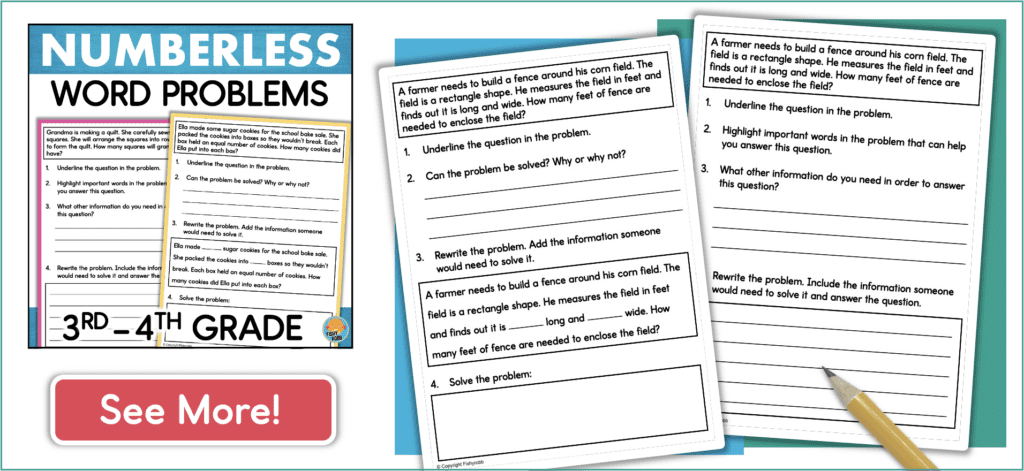
.
Underline the Actual Question
A good strategy when teaching kids how to solve math word problems is to have them underline the question portion of the problem. Again, this seems like a no-brainer, but many kids ignore the actual question in a word problem. This often happens with two-step problems. Here’s an example:
Natalie measures her fish tank so she can calculate the volume. It is 12″ long, 8″ wide, and 8″ deep. One fish needs 6 cubic inches of space. How many fish can fit in the tank?
At least a few of my 5th graders would come up with 768 as their answer because they calculated the volume. A good way to stop this is to make them restate the question and write the final answer in a complete sentence:
The fish tank is 768 cubic inches.
Many times this is enough to get the student to realize that their answer isn’t reasonable because they didn’t answer the actual question that they underlined.
.
Focus on the Important Information
Once students understand what they are being asked to find, they need to collect information to solve the problem. A skill worth teaching is how to disregard extra information that isn’t needed.
I suggest spending a little time helping your students learn to dissect a problem. Read it together, talk about what information would be needed to find the correct answer, then look for it in the problem. Cross out anything else that is unneeded.
With younger students, start with problems that have extraneous information that is completely useless. Here’s an example:
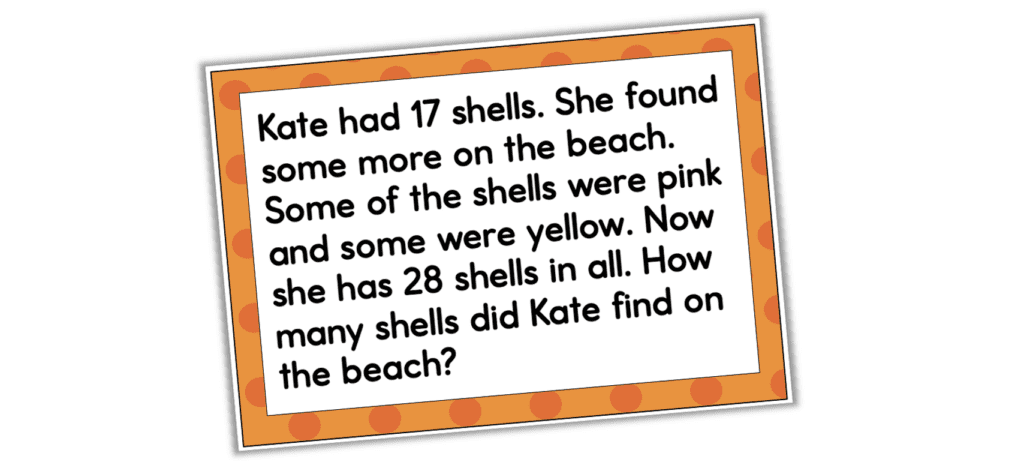
Once they learn to discard very obvious rubbish, increase the difficulty a bit and let them practice being math detectives. The point of this exercise isn’t to solve the problem. It’s to learn how to decipher the problem, which is a very important critical thinking skill.
A common mistake when teaching students how to solve math word problems is having them refer to a key word list. I really encourage you to teach other strategies instead! See why relying on a list of key words can be a bad problem solving strategy in math.
.
➡️ Do More Than Just Read the Problem
When teaching students how to solve math word problems, especially if they aren’t strong readers or native English speakers, it’s important to do more than just read the problem. Reluctant readers will often shut down when faced with a word problem. They need other ways to access and understand the information. It is actually pretty easy to provide this support in the classroom.
Some ideas:
- Act it out – This is a great way to help students conceptualize what is happening in a word problem in a very concrete way. Read the problem out loud and have students physically act out what you are saying.
- Draw a picture or a model – This is a little bit more abstract than acting it out. After students draw what is happening in the problem, have them label the drawing with the corresponding numbers. This builds a bridge between the concrete representation and an abstract equation.
- Use graphic organizers – This can be a tape diagram, a sequencing chart, a place value table, or a problem-solving mat. These give students a structured way to record and organize information from the problem before trying to work it out.
.
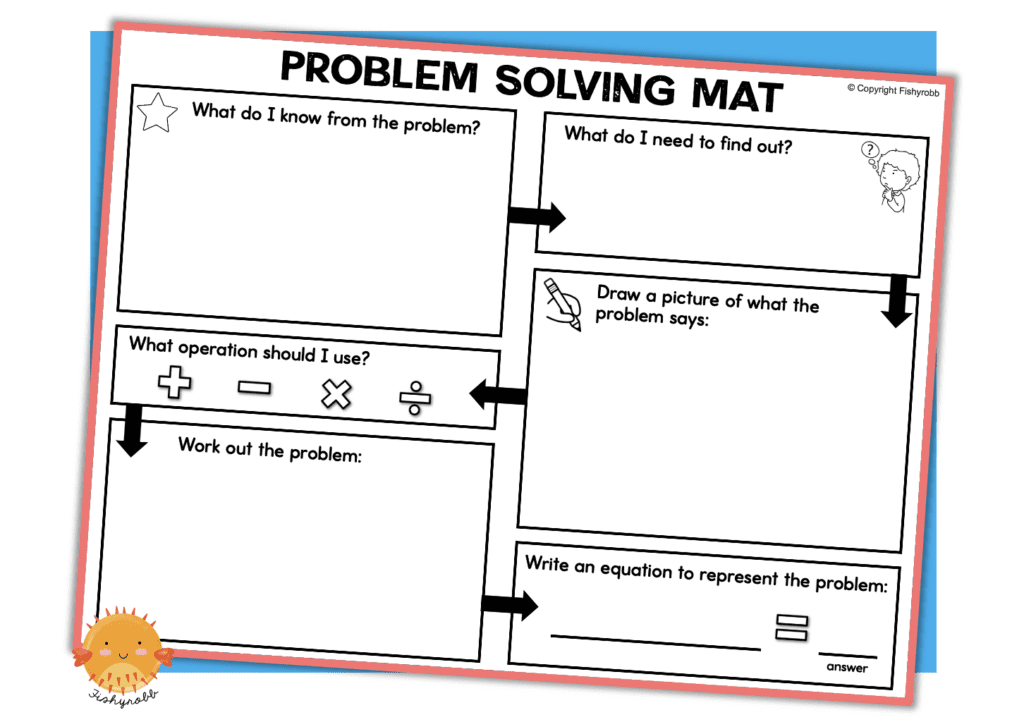
This is a word problem work mat I created to provide students with structure and a process to follow when solving word problems.
⏬ You can download a free copy by clicking the image.
.
➡️ Teach the Different Types of Problems
This is a great critical thinking exercise that will help your students really understand word problems. Instead of just trying to decide on what operation to use, teach them to identify what type of problem it is.
A good activity to practice this is a word problem sort. Have students group problems into sets according to their type. For example, problems can involve:
- getting more
- taking away
- comparing amounts
- finding a missing part
- sharing equally
.
➡️ Have Students Write Their Own Word Problems
Writing during math isn’t a new idea, but have you tried letting students write their own word problems? It’s a great way to build a much deeper understanding when teaching them how to solve math word problems. I like to do this during my small groups.
Many students will have difficulty creating a word problem from scratch, so I suggest giving them a starting point. One way is to provide them with the numbers and let them make up a story to go with them.
But an even better way is to show them an interesting picture and asking them what kind of mathematical question could be asked and answered using it. Then they can build their word problem around that. It’s similar to a 3-act task but less open ended.
Teaching students how to solve math word problems takes a lot of practice. Kids need opportunities to solve many different types of word problems using a variety of math strategies. Start simple before working up to more complex problems. Students must be able to consistently solve single-step problems correctly before they move on to two-step problems.
Practicing word problems should happen all year, not just when teaching basic operations. A great way to do this is by including a daily word problem into your math block – no matter what math skills you’re currently teaching. But that’s easier said than done, right? It can be hard to come up with quality word problems.
But I can help! Here are some classroom-tested resources for teaching students how to solve math word problems:
